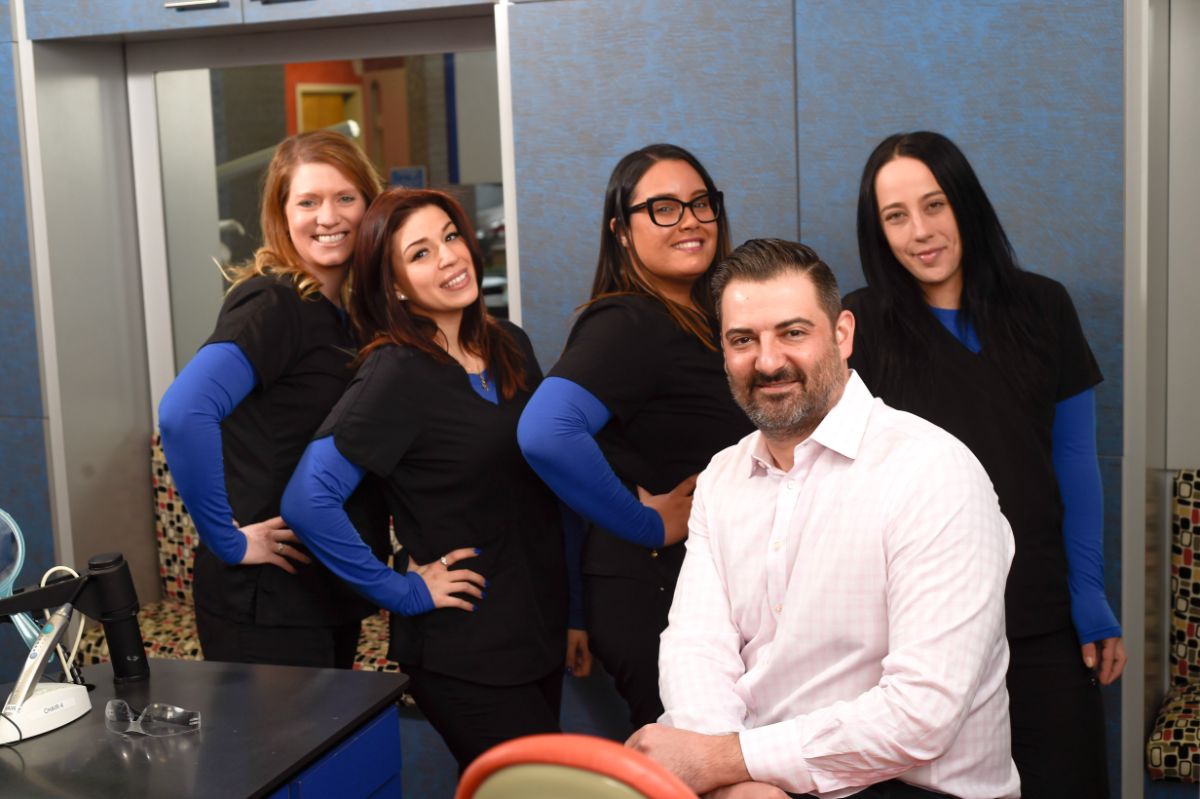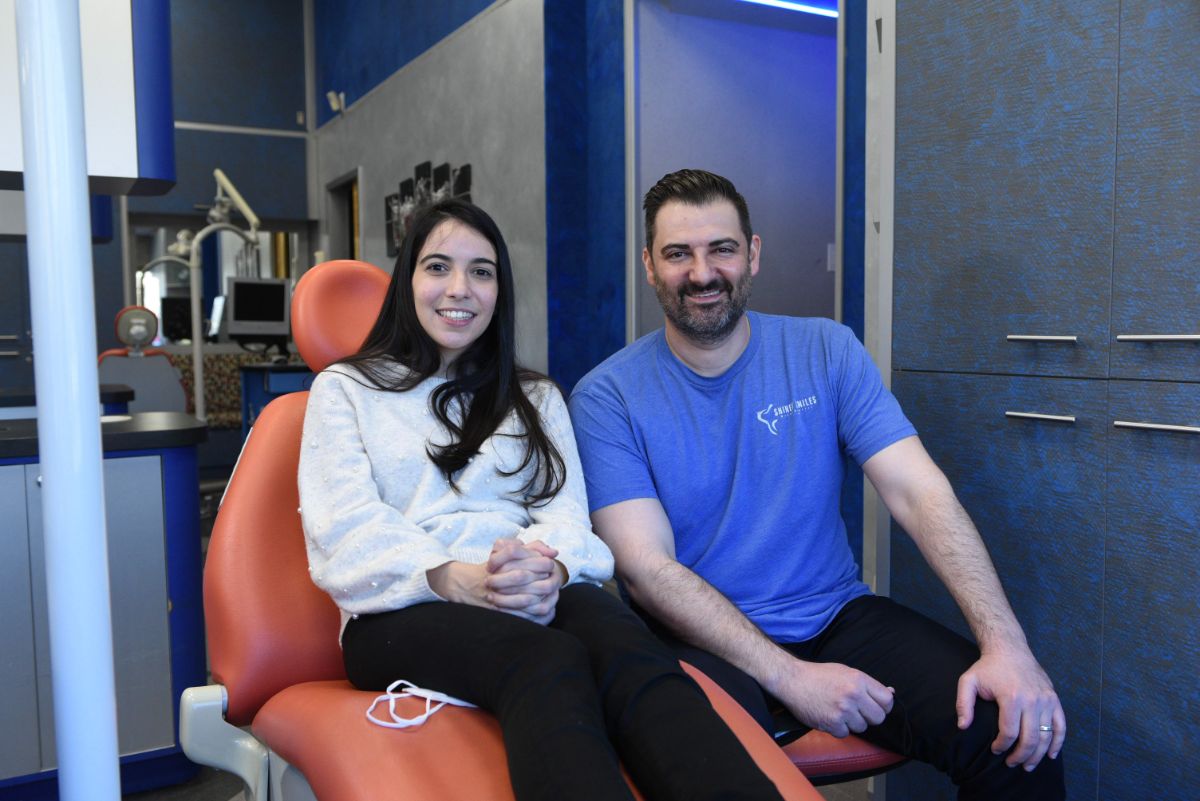Here at Shiney Smiles Orthodontics, we often hear from parents who are curious about orthodontic treatment for their child. Some want to know if their child should see an orthodontist as frequently as they do their dentist, while others wonder how they can tell if their child needs treatment. There are many factors we take into consideration when it comes to a child’s smile, including their age, the alignment of their teeth and jaw, and their dental development. An early orthodontic evaluation by an experienced orthodontist is the key to recognizing and treating your child’s misaligned jaw!
The American Association of Orthodontists recommends children have an orthodontic evaluation by the time they’re about seven years old, and we agree. Most kids this age will have enough dental landmarks in place that their teeth, jaw, and bite can be assessed for normal development by an orthodontist like Dr. Michael Sheinis.
There are several common issues they’ll be looking for during this initial visit. If you’re a parent, it can be helpful to have a basic understanding of how these oral challenges can affect your child—and how we can correct them! Keep reading below to learn more.

Crowded teeth
Healthy teeth and gums are essential to good oral health, but if your child has crooked teeth, it can be difficult to brush and floss them effectively. This increases the chance of them developing tooth decay and cavities. Customized treatment can move the teeth into better positions in small increments over time, giving your child a smile that is easier to care for. It can also lessen facial tension and relieve difficulties with chewing and speech!
Missing teeth
Gaps between the teeth can exist because congenitally missing teeth never grew in, or they may be created when permanent teeth are lost due to injury or disease.
Gapped teeth
Gapped teeth are common, especially in children, and can happen for a variety of reasons. Whether it’s due to genetics or bad oral habits like thumb sucking and extended pacifier use, we can create a personalized treatment plan to help close gaps in your child’s smile.
Open bite
With an open bite, the upper and lower rows of the front teeth don’t touch or close when smiling or chewing. Many open bites come from extended thumb sucking in childhood, which can cause the teeth to grow into a noticeably rounded formation.
Deep overbite
When a child has a deep overbite, the lower teeth recede so far behind the upper teeth that they bite into the roof of the mouth and the upper front teeth overlap the lower front teeth. Out of all the bite disorders, a deep overbite is the most detrimental to the teeth and health of the jaw joints. It can also negatively affect a child’s face shape and appearance.
Underbite
An underbite occurs when the bottom teeth protrude in front of the upper teeth. This type of bite misalignment can cause pain at the jaw joint and the angled pressure can wear down some of the teeth. There are a few treatment options available for children who have an underbite, including:
- an upper jaw expander, which can be widened nightly until treatment is complete
- a reverse-pull face mask, which wraps around the head and attaches to metal bands on the back upper teeth to pull the upper jaw forward
- traditional braces to adjust the misaligned teeth
Treatments like these will not only help relieve any pain and discomfort caused by the underbite, they’ll also make it easier for your child to smile, eat, and breathe more effectively.
Overjet
If a child has an overjet, their top front teeth will protrude far beyond the bottom front teeth. This is often referred to as “buck teeth.” Treatment for this issue is most effective when the child is diagnosed early, as this gives us the chance to guide tooth eruption to our advantage.
What causes a misaligned bite? How can it be treated?
There are several reasons your child might develop a malocclusion. Bad bites or crooked teeth are often the result of genetics, but this can also occur with:
- mouths that are too small for their teeth
- upper jaw and lower jaws that are different sizes
- the early loss of baby teeth
- jaw injuries
- extended thumb sucking or pacifier use
- prolonged use of a bottle
- tongue thrusting
While you may not always be able to prevent a misaligned bite, there are steps you can take to correct it! Because every child’s smile is unique, there is no one-size-fits-all treatment plan. When you schedule an evaluation for your child with our Woodbury or Huntington office, one of our doctors will perform an oral examination and assess your child’s teeth and jaw.
If treatment is required, we’ll create a customized treatment plan based on your child’s specific needs. This may include the use of one or more orthodontic appliances, something we’ll discuss with you in detail during their visit. Some of the most common treatment options include the following.
Braces
Braces tend to be the most common way to correct a malocclusion. Our practice offers a range of braces, including:
- Traditional metal braces
- Clear braces
- INBRACE lingual braces
With braces treatment, brackets are affixed to the front or back of the teeth and connected with a flexible wire. The wire is regularly tightened throughout the treatment process, slowly moving the teeth and jaw into more optimal positions. We may also use elastic bands to apply pressure that will achieve better alignment. Once treatment is complete, we’ll provide the patient with a retainer that will help keep their new smile in place.
Upper jaw expander
Upper jaw expanders are an orthodontic appliance we can use to correct an underbite. The wire-frame device fits across the upper palate, and a special key is used to widen the expander a very small amount each night. Over time, this will widen the upper jaw and bring the bite into alignment.
Jaw surgery
In rare instances, jaw surgery may be required to correct a misaligned bite, although this is typically reserved for patients who are struggling to perform everyday functions like eating, sleeping, and speaking. Thankfully, we can usually correct alignment issues in children before they get serious enough to need surgery.
What are the benefits of correcting a misaligned bite?
Correcting a misaligned bite can relieve jaw pain, but there are other benefits to consider as well! Your child’s teeth will be easier to clean, which reduces the risk of developing tooth decay and cavities. They’ll be less likely to chip their teeth or lose them prematurely, and they’ll be able to speak with more clarity. Appropriate treatment will help increase your child’s self-confidence and give them a smile they’ll be proud to share with everyone around them!

Find your child’s best smile at Shiney Smiles Orthodontics
Correcting your child’s misaligned bite is an important investment, and one they will reap the rewards of for years to come. With a variety of effective and affordable treatment options available, it’s never been easier to get your child’s smile off to a great start!
Our goal here at Shiney Smiles Orthodontics is to improve your child’s oral health, align their bite, and enhance their self-confidence, and our expert team and advanced treatment options can do all three!
If you’ve been wondering if orthodontics could benefit your young child, we’d love to meet you both and take a look at their smile! Get in touch today to schedule a FREE consultation with Dr. Sheinis. We have what it takes to give your child the best start towards a lifetime of healthy smiles.

